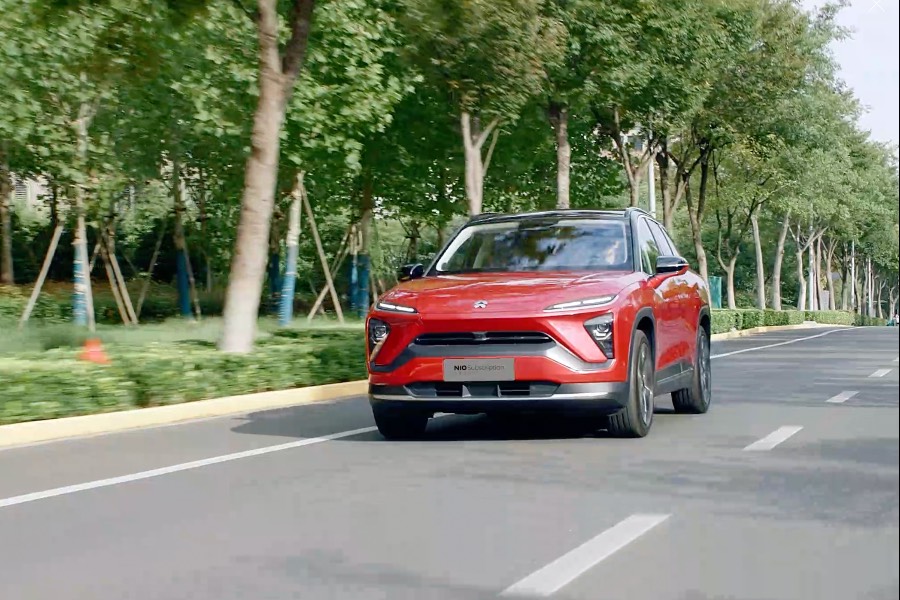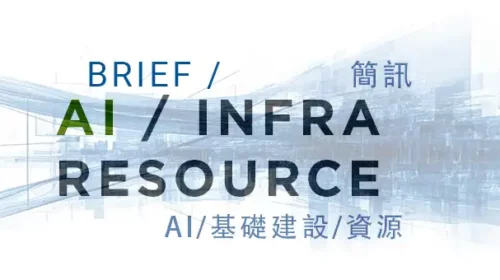Nio’s road to profitability obscured in haze of losses

The NEV maker’s sales fell short of expectation and its losses continued to widen in the first quarter, even as founder Li Bin outlined a route to profitable by year-end
Key Takeaways:
- Nio’s first-quarter net loss widened 30.2% year-on-year, making its goal of becoming profitable by year end look even harder to reach
- The new energy vehicle maker’s 42,000 units delivered in the first quarter failed to reach even 10% of its annual target
By Lee Shih Ta
Non-stop price wars are taking their toll on China’s new energy vehicle (NEV) sector, wearing down company margins as a flood of products saturate the market. The latest quarterly results from Nio Inc. (NIO.US; 9866.HK) reflect the challenges facing many companies, including widening losses for the company and sales that came in well behind its targets, in what increasingly looks like a race for survival.
Numerous government agencies and institutions, including the Ministry of Industry and Information Technology (MIIT), China Association of Automobile Manufacturers and China Auto Dealers Chamber of Commerce, have voiced deep concerns about the cutthroat competition that has come to characterize China’s once-vibrant NEV industry. They have stepped up their criticism of the industry’s race-to-the-bottom lately, stressing the need to end negative tactics that undermine individual brands and the entire industry’s ecosystem.
Observers point out the growing chorus marks the first acknowledgement from official sources that China’s NEV sector is reaching an “inflection point.” Standalone companies like Nio, which have big sales but are thin on resources compared with rivals tied to bigger companies, are feeling some of the biggest squeeze in the coming shakeout.
Nio delivered a total of 42,000 vehicles in the first quarter, up 40.1% year-on-year but down 42.1% quarter-on-quarter, according to its first-quarter report released last week. During the same period, revenue from its vehicle sales grew 18.6% year-on-year, but declined 43.1% quarter-on-quarter. The company’s first-quarter deliveries were less than 10% of the 440,000 vehicles it set as its sales target for the year.
Nio’s latest quarterly sales also paled in comparison with NEV rivals like Li Auto (LI.US; 2015.HK), XPeng (XPEV.US; 9868.HK) and Leapmotor (9863.HK), failing to reach even half the total for each of those rivals.
In revenue terms, Nio brought in 12.04 billion yuan ($1.66 billion) in the first quarter, up 21.4% year-on-year. Its loss totaled 6.75 billion yuan during the period, 30.2% wider than a year earlier. Meantime, the gross margin for its vehicle business fell 2.9 percentage points from the previous quarter to 10.2%. Its overall gross margin reached 7.6%, up 2.7 percentage points year-on-year, but down 4.1 percentage points from the previous quarter.
Nio originally positioned itself at the high end of the market, but entered the mass market with the launch of its Onvo brand in last year’s third quarter, and its Firefly brand in late April this year. The company had high hopes for its first Onvo model, the L60, whose sales ultimately fell short of expectations. The company sold just 14,700 units of the L60 in the first quarter, far short of a target of 20,000 vehicles per month. Moreover, sales for its namesake Nio brand slid 10% year-on-year in the first quarter to 27,300 units.
Rising sales, administrative expenses
As its sales growth slows and losses widen, Nio continues to be hamstrung by rising operating expenses. Its sales and administration expenses reached 4.4 billion yuan in the first quarter, up 46.8% year-on-year, which the company attributed to higher labor costs and an increase in sales and marketing activities. It pointed to ramped-up marketing campaigns to boost its brands and the need to improve its visibility and user experience to stay competitive in the ultra-competitive landscape. The recent Onvo and Firefly launches also likely involved massive upfront spending to boost the new brands.
The company also increased its R&D spending by 11.1% year-on-year to 3.18 billion yuan for the quarter, 680 million yuan more than Li Auto’s 2.5 billion yuan, even though its revenue was less than half of Li Auto’s 25.9 billion yuan.
Nio founder and Chairman Li Bin said the disappointing first-quarter sales for Onvo led the company to reshuffle the new brand’s team and core management. Onvo President Ai Tiecheng resigned in early April after admitting failure to lift sales to match the brand’s market presence.
Positive annual outlook
This year is a major one for Nio, with a number of new models slated for unveiling under its three brands. Onvo’s second model, the L90, is scheduled to hit the market in the third quarter, after getting some positive buzz at the Shanghai auto show in April. That model, combined with the L80, set for a fourth-quarter launch, and the L60 already on offer, are expected to deliver up to 25,000 units per month for the brand in the fourth quarter. The E38, a new model under the Nio brand, will start delivery in the fourth quarter and is projected to deliver 25,000 units per month in the fourth quarter as well.
According to Li Bin, if the three brands can deliver at least 50,000 units per month at a gross profit margin in the 17%-18% range, and the company can control its selling and R&D spending, Nio could become profitable in the fourth quarter. To reach that goal, the company plans to keep its fourth-quarter R&D expenses at 2.5 billion yuan or less, while cutting its sales and administration expenses to around 10% of total sales.
However, investment banks don’t seem to share the company’s optimism. CMB International, for example, believes the company’s profit forecast is based on assumptions for four areas, namely, sales volume, gross profit, lower R&D costs and lower selling expenses. In terms of sales volume, it is projecting a four-fold increase in fourth-quarter sales compared with the first quarter to reach its profit milestone. Meeting that assumption, not to mention the other three, could be a tall order.
Nio had around 26 billion yuan in cash at the end of the first quarter, while its liquid liabilities exceeded liquid assets and its net cash flow was negative. Given the size of its quarterly losses and ongoing capex needs in the next few quarters, even after raising HK$4 billion ($510 million) in Hong Kong through a new share issue, it might need to turn to the market again for more funds.
Nio’s Hong Kong-listed stock rose 1.6% to HK$27.95 on the first trading day after its latest earnings announcement, though the shares are still down 20% year-to-date. The stock currently trades at a price-to-sales (P/S) ratio of just 0.77 times, less than half Li Auto’s 1.57 times, and even further behind XPeng’s 2.67 times and Leapmotor’s 2.2 times. That seems to show investors think less highly of the company compared to its peers and are concerned about its future growth and profit potential.
To subscribe to Bamboo Works weekly free newsletter, click here




